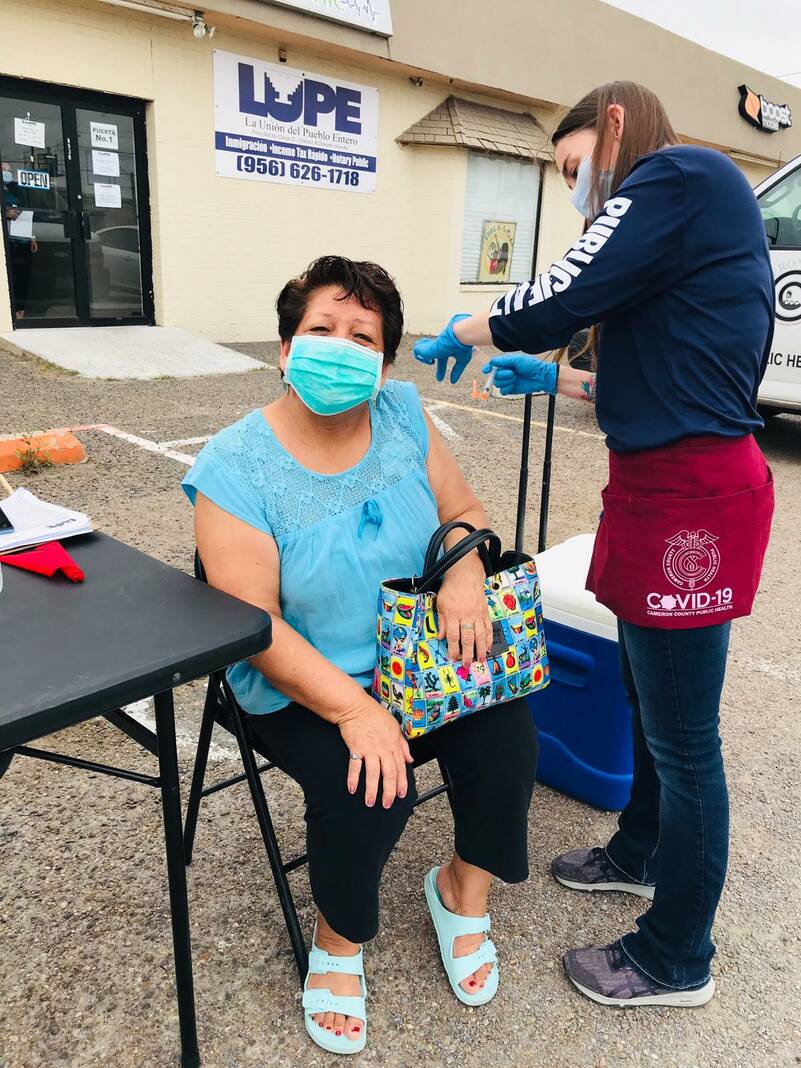
Through his work with residents of underserved colonias as a director of organizing for La Union del Pueblo Entero (LUPE), Daniel Diaz already knew health equity was an issue in the Rio Grande Valley.
Just how much of an issue was driven home during the COVID-19 pandemic, when he began hearing reports of residents denied the vaccine due to immigration status — despite the federal government’s stipulation that the free vaccine be available to everyone who met the age requirement, regardless of immigration status, because of the seriousness of the public health emergency.
“Literally people were being denied the vaccine,” Diaz said. “It’s a huge issue for public health, when we’re trying to build confidence in our immigrant community and our community in general, and people are being denied because of immigration status.”
He made the remarks during a virtual Racial Equity Rapid Roundtable hosted by the nonpartisan, nonprofit research and advocacy group Children at Risk on April 6.
LUPE mobilized an aggressive response, conducting a survey of at least clinics and pharmacies in Cameron, Hidalgo and Starr counties to find out what questions they asked those requesting the vaccine, Diaz said.
“Some were asking for a passport,” he said. “Some were asking for just state ID. Some were not asking for anything, so there was inconsistency.”
LUPE published a report on April 21, 2021, based on that survey. It revealed that, while most providers were providing the vaccine to every age-eligible person who asked for, some were not, including the University of Texas Rio Grande Valley and major retailers like H-E-B and CVS.
The survey found that people were being improperly denied the vaccine because they lacked a Social Security number and/or health insurance. The process was made more consistent, fair and equitable thanks to the work of LUPE organizers on the ground, Diaz said.
“That also signaled to us that we had to be a lot more direct and involved in the community, versus just promoting the vaccine in general,” he said. “We had to be on the ground to help build more vaccine confidence.”
LUPE organized on-site vaccination clinics for farm workers — literally in the fields— and colonia residents since those populations were less likely to get vaccinated due to accessibility issues, Diaz said, adding that the clinics helped build confidence in the vaccine in part because LUPE’s own members volunteered to staff them.
LUPE also “knocked on thousands of doors to provide the vaccine” and partnered with Cameron and Hidalgo counties to get the vaccine to specific communities, he said. The organization’s efforts were complicated by vaccine disinformation, much of it being spread via Spanish-language social media networks, and all community organizations should have done more to counter it, Diaz said.
“I think for sure we underestimated the disinformation out there, the propaganda, how there were no boundaries in terms of … politicizing even the wearing of a mask,” he said. “It did have an effect. It had a deep effect.”
In Texas, the COVID-related death rate for border residents below the age of 65 were more than twice the state average and nearly three times the national average.
Next time, community organizations need to “respect the power of the propaganda” and be ready prepared to meet disinformation head on, Diaz said.
Hansel O. Ibarra, program director for MHP Salud in Weslaco, also took part in the April 6 roundtable. He said colonia residents’ poor access to information “plays a big role in the health of a population” and makes them especially vulnerable to disinformation. A common misconception was that the vaccine was available only to U.S. citizens or legal residents, or even that it contained microchips, he said.
Disinformation, combined with low rates of insured and high poverty rates, contributes to health disparities in those communities, Ibarra said. MHP’s attempts to address it by sending health workers into the community to provide those resources and information, while the nonprofit’s navigator program helps residents sign up for insurance, he said.
Adriana Cadena, director of Protecting Immigrant Families for the National Immigration Law Center in El Paso, also spoke during the roundtable and said that when vaccine doses ran short in El Paso, residents without legal immigration status were unable to travel to the Midland-Odessa area, where doses were available, due to immigration checkpoints and despite the raging public health crisis.
“There was no emergency declaration to open up these checkpoints so that folks could travel from El Paso to Midland to get a vaccine, which is part of a public health emergency,” she said. “I think that that’s one of the realities that we face and that we need to make sure are addressed when public health emergencies arise.”
Sharon Watkins Jones, director of the Texas Racial Equity Collaborative for Children at Risk, hosted the roundtable along with Guadalupe Fernandez, director of the organization’s Children’s Immigration Network.
Jones said the pandemic “really sort of pulled back this curtain on racial disparities that we knew was there to begin with, but absolutely could not be denied in the wake of this pandemic that was hurting and killing black and brown folks at higher rates.”
“I think that a lot of people underestimated the deep racial inequities, didn’t think that it was that bad,” Diaz said. “That was one thing that came out of (the pandemic). A lot of people see it a lot more clearly. But it didn’t come without sacrifice and … a lot of lives unfortunately.”




